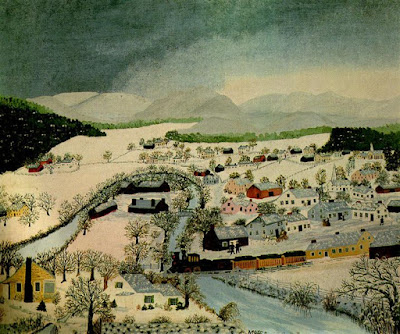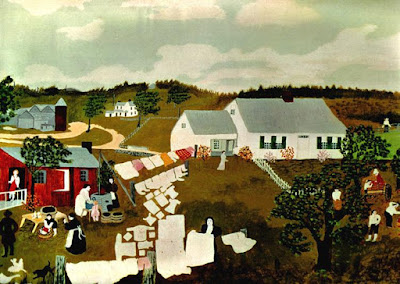How do you juggle a family, work and other responsibilities with painting?
 |
|
Working Woman (with Earring), 1910, etching, Käthe Kollwitz, courtesy Brooklyn Museum |
When I had my twins in 1989, there was a pernicious canard that women could ‘have it all.’ I was juggling infant twins and a job in an arts organization. A reporter called to do the requisite story on this new mode of working motherhood. She asked me how I was doing. “Not very well!” I snapped. That wasn’t the answer her editor wanted, so she didn’t write the story.
 |
|
Kandinsky with the Art Dealer Goltz at Aimillerstrasse 36, Munich, 1912, by Gabriele Münter. She let her relationship with Kandinsky dominate her life. That hampered her career. |
Three decades later, it’s even more difficult. Today’s young mothers are also hybrid-schooling their kids. This combines the rigidity of the classroom with the demands of the child’s actual presence. My daughter and son-in-law balance their obligations by getting up in the small hours of the morning to do their salaried work. Shades of my mother in the 70s, who went back to college after having six kids. She studied in the wee hours.
I don’t advocate that as a long-term strategy. Chronic sleep deprivation is terrible for your health.
There have been successful women artists through history. They tended to be childless or post-menopausal, as in the case of Anna Mary Robertson Moses. She was from a large family and hired out as a farm hand at age 12. She married and delivered ten children, five of whom lived to adulthood. She really didn’t have time to paint in earnest until she retired and moved in with a daughter. She was 78.
 |
|
The Young Couple, 1904, etching, Käthe Kollwitz, courtesy Brooklyn Museum |
The great exception to this was the German expressionist, Käthe Kollwitz. On her marriage in 1891, she insisted on household help so she could pursue her vocation. The result is some of the most stark and meaningful art of the 20thcentury.
Kollwitz realized that she had to treat her artwork as a real job or it would be swamped by household demands. That meant hiring out the cleaning and childcare. Too many women artists think they can sneak the artwork in around their domestic duties. That doesn’t respect the importance and demands of either homemaking or art.
But don’t think this is a dilemma limited to women. I have a friend who’s a well-known painter. He has four kids, so he works nights at a big-box store to cover expenses.
 |
|
Sugaring Off, 1955, Grandma Moses. None of her earlier experiences were a ‘waste of time’ in terms of her art. They informed everything she painted. |
The successful professional artist has much in common with the successful entrepreneur. He or she must be risk-tolerant, willing to work long hours, and able to strip the chaff away from daily life, creating periods of focus and isolation. As with all self-employed people, the artist’s job is a balance of creative work, business management, and—yes—interruptions.
That focus can be tough on the other members of your household. I have a friend whose boyfriend continually complained about her traveling to plein air events. As painting was essential and he wasn’t, he had to go.
COVID has, ironically, freed us from some of our great time wasters—travel, shopping, and entertainment. But we all still have habits, tasks or hobbies that use time. If you want to succeed as a professional artist, you must weigh their importance. There are some, like family, that are priceless, so choose wisely. Be patient with yourself and realize we’re all juggling the same things.












